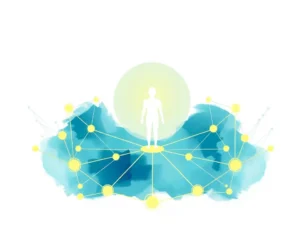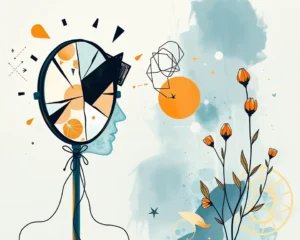The start of a new year often brings resolutions for self-improvement, and incorporating mindfulness into your daily life can be a powerful way to enhance well-being. Mindfulness, a practice rooted in ancient meditation traditions, involves paying attention to the present moment without judgment. This simple yet profound skill can reduce stress, improve focus, and foster a deeper sense of calm.
Understanding Mindfulness
Mindfulness is about being fully present, engaging with your thoughts, feelings, and surroundings without being swept away by them. It’s a technique that can be learned and applied to everyday life. Unlike meditation, which is often a formal practice, mindfulness can be woven into any activity, from eating a meal to walking down the street.
Key Components of Mindfulness
- Attention: Directing your awareness to the current experience, such as your breath, bodily sensations, or the environment around you.
- Acceptance: Observing your thoughts and feelings without judgment, allowing them to pass without reacting to them.
- Present Moment Focus: Fully engaging with the “now,” rather than dwelling on the past or worrying about the future.
Why Practice Mindfulness?
The benefits of mindfulness are well-documented. Studies show that regular mindfulness practice can significantly impact both mental and physical health.
Mental Health Benefits
- Stress Reduction: Mindfulness helps to reduce activity in the amygdala, the part of the brain that triggers the stress response.
- Anxiety Management: By observing thoughts without judgment, mindfulness can help break cycles of anxious thinking.
- Depression Relief: Research suggests mindfulness-based therapies can be effective in reducing symptoms of depression and preventing relapses.
- Improved Focus and Concentration: Mindfulness can enhance attentional capacities by training the mind to stay present and focused.
- Better Emotional Understanding: By becoming aware of your feelings in a non-reactive way, you can understand your emotions better.
Physical Health Benefits
- Lower Blood Pressure: Mindfulness has been shown to help lower blood pressure and reduce the risk of heart disease.
- Pain Reduction: It can be useful in managing chronic pain by changing how pain is perceived and processed.
- Improved Sleep: By reducing stress and promoting relaxation, mindfulness can lead to better sleep quality.
- Boosted Immune System: Some studies suggest mindfulness can positively influence immune function.
Getting Started with Mindfulness: Practical Techniques
Mindfulness is a skill that improves with practice. Here are some simple techniques to get started:
Mindful Breathing
This is a foundational exercise in mindfulness.
- Find a comfortable position, either sitting or lying down.
- Close your eyes gently or soften your gaze.
- Focus on your breath as it enters and leaves your body, noticing the rise and fall of your chest or abdomen.
- If your mind wanders, gently bring your attention back to your breath, without judgment.
- Start with just a few minutes and gradually increase the time as you become more comfortable.
Body Scan Meditation
This exercise involves systematically bringing your attention to different parts of your body.
- Lie down on your back with your legs extended and arms at your sides, palms facing up.
- Begin by focusing your attention on your toes, noticing any sensations.
- Slowly move your attention up through your body, from your feet to your ankles, calves, knees, and so on, all the way to the top of your head.
- Acknowledge any feelings, sensations, or thoughts that arise without judgment, and simply let them pass.
Mindful Walking
This is an opportunity to turn an everyday activity into a mindfulness practice.
- Pay attention to the sensations in your feet as they make contact with the ground.
- Notice the movement of your body as you walk, the feeling of the air on your skin.
- Engage all your senses: sight, sound, smell, and touch.
- Walk slowly and deliberately, fully present in each step.
Engaging Your Senses
Engaging your senses can be a great way to ground yourself in the present moment.
- Deep Seeing: Choose an object, and focus on all of its aspects, noticing its colors, shapes, and textures.
- Deep Listening: Sit and listen to the sounds around you, without trying to identify them, simply being present with the sounds as they occur.
- Mindful Eating: Pay attention to the taste, texture, and smell of your food, savoring each bite.
- 5-4-3-2-1 Technique: Use this technique to engage all senses, spot five things you see, notice four things you can feel, listen for three sounds, detect two scents and identify one taste.
Informal Mindfulness
Mindfulness doesn’t always require structured practice.
- Showering: Pay attention to the feeling of the water, the scent of the soap, and the sounds around you.
- Commuting: Observe the world around you without making up stories or judgments.
- Conversations: Focus on truly listening and understanding what others are saying.
- Work/Study: Focus on being present in what you are doing, without distraction.
Creating a Mindfulness Routine
Establishing a regular practice is key to experiencing the full benefits of mindfulness.
Start Small
Begin with short sessions of just a few minutes each day and gradually increase the duration as you become more comfortable. Even a minute of mindful breathing can be beneficial.
Consistency is Key
Try to practice at the same time each day, whether it’s in the morning before you start your day or in the evening before bed.
Find a Quiet Space
Choose a calm, quiet location where you can practice without being disturbed.
Be Patient and Kind
Don’t get discouraged if your mind wanders, it’s natural. Be gentle with yourself and accept that some days will be easier than others.
Use Self-Help Tools
- Apps: Many apps offer guided meditations, including Calm, Headspace, Smiling Mind, and Insight Timer. They provide various lengths and topics, suitable for both beginners and advanced practitioners.
- Books: Explore books like “The Mindful Path to Self-Compassion” by Christopher K. Germer or “The Power of Now” by Eckhart Tolle for guidance and inspiration.
- Audio Guides: Use audio files that guide you through mindfulness exercises.
Incorporate Mindfulness into Your Morning
- Plan Ahead: Design an intentional start to the day by planning your morning routine ahead of time.
- Slow Down: Avoid jolting awake with loud music or technology; instead, ease gently into the day.
- Prioritize: Complete your mindful morning ritual before engaging with technology.
- Journaling: Write down what you’re thinking and how you’re feeling to increase your awareness.
- Breathwork: Engage in breath work to break the cycle of feeling anxiety, stress or overwhelm.
Mindfulness Beyond Meditation
Mindfulness isn’t confined to formal meditation. Here are a few ways to incorporate it into your daily life:
Mindful Movement
Turn physical activities into mindfulness practices. Pay attention to your body’s sensations and movements while you work out, engage in yoga, or even do simple chores.
Mindful Listening
When talking with others, be fully present. Give your full attention to the person speaking, focus on the words they are saying, and allow them to express themselves without interruption.
Mindful Appreciation
Take time to appreciate the beauty around you and cultivate gratitude.
Overcoming Challenges
Starting a mindfulness practice can present certain challenges.
Wandering Mind
It’s common for the mind to wander. Gently acknowledge these thoughts and bring your focus back to the present moment, without self-criticism.
Time Constraints
Even just a few minutes a day can make a significant difference. Integrate short mindfulness exercises into your daily routine as you are commuting or doing chores.
Boredom
Mindfulness is not about achieving an empty mind, it is about cultivating awareness and acceptance. If you feel bored, acknowledge the feeling, then redirect your attention back to the present moment.
Conclusion
Incorporating mindfulness into your life can be a transformative journey towards greater well-being. By learning to be present and non-judgmental, you can significantly reduce stress, enhance your mental clarity, and improve your relationships. As you embark on this practice in the new year, remember to start small, be patient with yourself, and enjoy the journey of self-discovery that mindfulness offers.










